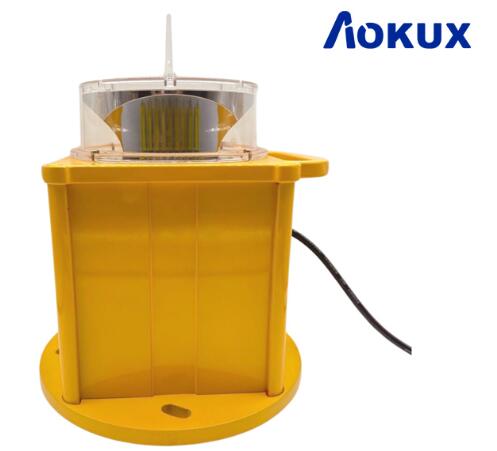
The aviation industry has always been at the forefront of technological advancements, and one of the most critical yet often overlooked components is the heliport airport beacon light. These lights play a pivotal role in ensuring the safety and efficiency of air traffic, particularly in urban environments where space is limited and visibility is often compromised. This article delves into the innovative applications of heliport airport beacon lights, exploring their significance, technological advancements, and future potential.
The Role of Heliport Airport Beacon Lights
Heliport airport beacon lights are essential for the safe operation of helicopters, especially during night-time or adverse weather conditions. These lights serve as visual aids, guiding pilots to the heliport and ensuring that they can land safely. The beacon light is typically mounted on a tall structure, making it visible from a distance. It emits a bright, flashing light that can be seen from various angles, providing a clear reference point for pilots.
Technological Advancements in Beacon Lights
Over the years, there have been significant advancements in the technology behind heliport airport beacon lights. Traditional incandescent bulbs have been replaced by more energy-efficient LED lights, which offer several advantages. LEDs consume less power, have a longer lifespan, and provide brighter illumination. Additionally, modern beacon lights are equipped with smart controls that allow for remote monitoring and adjustment. These controls enable operators to change the light's intensity, flash pattern, and color, depending on the prevailing conditions.

Integration with Urban Infrastructure
One of the most innovative applications of heliport airport beacon lights is their integration with urban infrastructure. In densely populated cities, where space is at a premium, heliports are often located on rooftops or other elevated structures. Beacon lights are now being designed to blend seamlessly with the architectural aesthetics of these buildings. For instance, some beacon lights are incorporated into the design of skyscrapers, serving both functional and decorative purposes. This integration not only enhances the visual appeal of the structure but also ensures that the heliport remains easily identifiable.
Enhancing Safety with Advanced Features
Safety is paramount in aviation, and heliport airport beacon lights are continually evolving to enhance this aspect. Modern beacon lights are equipped with advanced features such as automatic brightness adjustment, which ensures optimal visibility regardless of the time of day or weather conditions. Some beacon lights are also integrated with GPS and other navigation systems, providing real-time data to pilots. This integration allows for more precise navigation, reducing the risk of accidents and improving overall safety.
|
heliport airport beacon light |
heliport airport beacon lights |